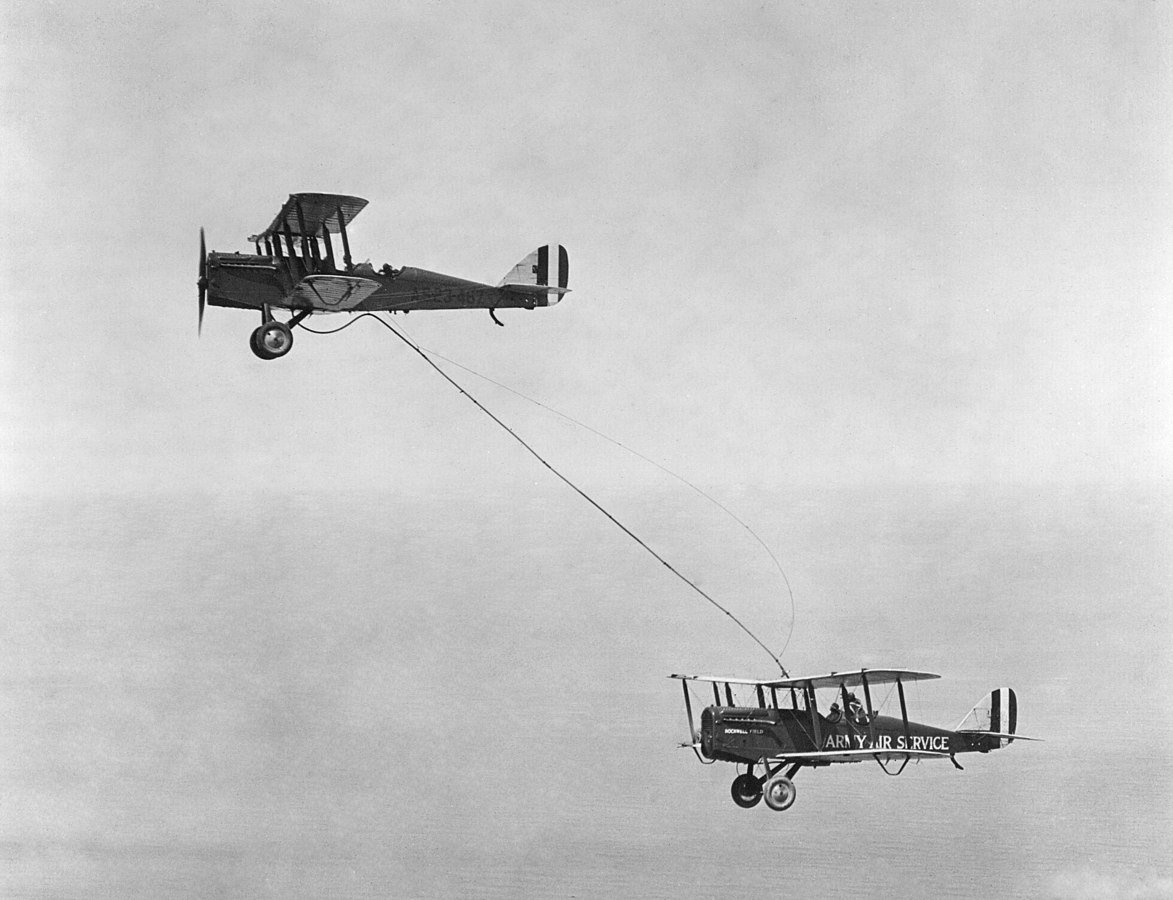The Pioneers of Aerial Refueling: Capt. Lowell H. Smith and Lt. John P. Richter
On June 27th, 1923, Capt. Lowell H. Smith and Lt. John P. Richter marked a significant milestone in aviation history by accomplishing the first ever aerial refueling. As members of the U.S. Army Air Service, their pioneering efforts laid the groundwork for subsequent advancements in aerial refueling technology. Understanding the backgrounds of Smith and Richter provides valuable insight into the expertise and determination that drove this groundbreaking achievement.
Capt. Lowell H. Smith, an experienced aviator, had already established a reputation for his skill and innovation in the field. His counterpart, Lt. John P. Richter, was equally adept, bringing technical prowess and a keen understanding of the mechanical aspects of aviation to the table. Together, they formed a formidable team, well-suited to tackle the technical challenges that lay ahead.
The preparation for this historic event was meticulous and thorough. Both aviators underwent extensive training to master the complexities of mid-air refueling. The mission required not only expert piloting skills but also a deep understanding of the technical modifications made to the DH-4B biplane. The aircraft had to be equipped with specialized fuel transfer apparatus, including hoses and nozzles, which were ingeniously designed to facilitate the transfer of fuel between aircraft while in flight. Ensuring the reliability and safety of these modifications was crucial, given the inherent risks involved.
One of the most significant challenges faced by Smith and Richter was the precise coordination required to align the two aircraft during the refueling process. This demanded exceptional communication and synchronization, as even the slightest miscalculation could have catastrophic consequences. The success of their mission was a testament to their unwavering focus, technical acumen, and the rigorous planning that went into every aspect of the operation.
Their successful completion of the first ever aerial refueling on June 27th, 1923, set a precedent for future developments in this domain. By overcoming the technical and logistical hurdles, Capt. Lowell H. Smith and Lt. John P. Richter demonstrated the potential of aerial refueling, paving the way for its integration into modern aviation practices. Their contributions not only advanced the capabilities of the U.S. Army Air Service but also underscored the human element behind this remarkable technological feat.
The Impact and Legacy of the First Aerial Refueling
The successful refueling on June 27, 1923, over Rockwell Field in San Diego, California, marked a pivotal moment in aviation technology. This historic event, known as the first-ever aerial refueling, was orchestrated by Capt. Lowell H. Smith and Lt. John P. Richter. Their pioneering flight demonstrated the feasibility of transferring fuel mid-air, thus significantly extending the operational range of aircraft. This innovation had immediate and profound implications for both military and civilian aviation.
In the military sphere, the ability to refuel aircraft in flight allowed for extended missions without the need for landing, which was particularly advantageous during wartime. This capability fundamentally altered military aviation strategies, enabling long-range bombing missions and reconnaissance flights that were previously impossible. The successful implementation of aerial refueling techniques during World War II and subsequent conflicts underscored its strategic importance.
Civilian aviation also benefitted from this breakthrough, as extended flight durations became more feasible. This opened the door to transcontinental and transoceanic flights, revolutionizing commercial air travel. Airlines could now operate longer routes without the need for multiple stopovers, making air travel more efficient and appealing to passengers.
The legacy of the 1923 first-ever aerial refueling extended beyond immediate applications. It spurred ongoing advancements in refueling technology, leading to the development of more sophisticated and reliable methods. Modern air-to-air refueling techniques, such as the boom and probe-and-drogue systems, owe their existence to the foundational work of Smith and Richter. These innovations have become standard in both military and civilian aviation, highlighting the enduring impact of the 1923 milestone.
For a deeper understanding of the historical context and subsequent advancements, primary sources and scholarly articles provide valuable insights. The pioneering efforts of Capt. Smith and Lt. Richter not only influenced future aviation projects but also played a crucial role in shaping the broader aerospace industry. Their achievement on June 27, 1923, remains a testament to human ingenuity and the relentless pursuit of technological progress in aviation.

